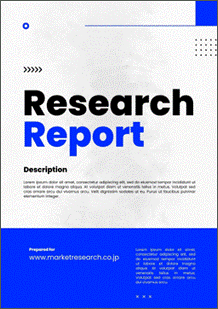 | • レポートコード:MRC2103D257 • 出版社/出版日:Mordor Intelligence / 2021年1月 • レポート形態:英文、PDF、120ページ • 納品方法:Eメール(受注後2-3営業日) • 産業分類:センサー |
| Single User | ¥629,000 (USD4,250) | ▷ お問い合わせ |
| Team User | ¥703,000 (USD4,750) | ▷ お問い合わせ |
| Corporate License | ¥1,110,000 (USD7,500) | ▷ お問い合わせ |
• お支払方法:銀行振込(納品後、ご請求書送付)
レポート概要
| 本調査レポートでは、世界の一酸化炭素(CO)ガスセンサー市場について調査し、イントロダクション、調査手法、エグゼクティブサマリー、市場動向、技術別(半導体センサー、電気化学センサー、ソリッドステート/MOSセンサー、PID、触媒作用)分析、用途別(医療、石油化学、ビルディングオートメーション、工業、環境)分析、地域別分析、競争状況、投資分析、市場機会・将来動向など、以下の構成でお届けいたします。 ・イントロダクション ・調査手法 ・エグゼクティブサマリー ・市場動向 ・世界の一酸化炭素(CO)ガスセンサー市場規模:技術別(半導体センサー、電気化学センサー、ソリッドステート/MOSセンサー、PID、触媒作用) ・世界の一酸化炭素(CO)ガスセンサー市場規模:用途別(医療、石油化学、ビルディングオートメーション、工業、環境) ・世界の一酸化炭素(CO)ガスセンサー市場規模:地域別 ・競争状況 ・投資分析 ・市場機会・将来動向 |
The carbon monoxide (CO) gas sensors market is expected to grow at a CAGR of 6% over the forecast period (2021 – 2026). Industries, on the other hand, have different applications, with some industries using CO gas for their process-related works, and other industries releasing it as a byproduct. To ensure a safe working environment and avoid any life threatening exposure to the workers, stringent and strict regulations are followed in the industries. These regulations have been critical in the high-paced and early adoption of CO gas alarms and detectors. Thus, this has directly impacted the increased demand for the CO gas sensors in industries.
– As the CO cannot be easily measured outside of a medical environment, CO toxicity levels are usually expressed in airborne concentration levels, such as PPM, and the duration of exposure. The CO gas sensors are deployed in a gas detector system or alarms for its application.
– Government regulations to ensure safety in workplaces are primarily increasing the growth of the carbon monoxide gas sensors market.
– Product miniaturization has helped in the development of portable gas sensor devices that provide the flexibility of carrying. Furthermore, in the industries, there is a high focus on adoption of automation, as well as collecting all the data. Such a requirement has resulted in increased demand for sensors that are wireless, and are enabled with two-way communication features.
Key Market Trends
Automotive is Expected to Hold a Significant Share
Many people die from carbon monoxide poisoning across the world. The recent incident involved a modified Ford Fiesta that had faulty exhaust system, which leaked fumes inside the cabin of the car. The unaware couple inside the car were killed, due to carbon monoxide poisoning.
According to an incident reported in 2018, deaths of five people in Alberta are being linked to CO poisoning in cars, prompting people to ensure that their vehicles are properly maintained. Such incidents are likely to drive the need to install carbon monoxide gas sensors in the automotive sector.
Moreover, police departments in more than a dozen states are concerned about possible carbon monoxide gas leaks in Ford Explorers. As two-thirds of the Centerville Police Department cruisers are Ford Explorers, officials have installed carbon monoxide detectors in all Explorers to monitor the situation. This, in turn, is expected to increase the adoption of CO gas sensors, as they are mostly used, along with CO gas detectors and alarms.
North America is Expected to Hold Major Share
As per the US Fire Administration, every year, more than 150 people in the United States die from carbon monoxide poisoning. Similarly, more than 50 people die every year from CO poisoning in Canada, according to the Ontario Association of Fire Chiefs.
The deaths mostly occur in cold weather, as people use fuel-burning appliances more frequently to keep themselves warm in this weather. As a result, the adoption for carbon monoxide (CO) gas sensors is beneficial, as these appliances can unknowingly cause dangerous levels of CO gas to build up in the home. The CO gas sensors are mostly used in carbon monoxide detectors and alarms.
There have been few incidents of CO poisoning recently. Nine people were sent to a hospital in Ontario, Canada, and one person died in a vehicle in Alberta. In the light of such events, Health Canada is warning Canadians to be alert in their homes and elsewhere, and to be aware of the dangers of carbon monoxide. Such events are expected to further drive the demand for CO gas sensors in North America.
Competitive Landscape
The carbon monoxide gas sensors market has gained a competitive edge in the past three decades, and consists of several major players. In terms of market share, few of the major players currently dominate the market studied. However, with increasing innovations and safety regulations, due to the gas leakage incidents, the companies in the market studied are strategically innovating in providing these sensors, which meet the regulations and policies.
Reasons to Purchase this report:
– The market estimate (ME) sheet in Excel format
– 3 months of analyst support
1 INTRODUCTION
1.1 Study Deliverables
1.2 Study Assumptions
1.3 Scope of the Study
2 RESEARCH METHODOLOGY
3 EXECUTIVE SUMMARY
4 MARKET DYNAMICS
4.1 Market Overview
4.2 Industry Value Chain Analysis
4.3 Industry Attractiveness – Porter’s Five Forces Analysis
4.3.1 Threat of New Entrants
4.3.2 Bargaining Power of Buyers/Consumers
4.3.3 Bargaining Power of Suppliers
4.3.4 Threat of Substitute Products
4.3.5 Intensity of Competitive Rivalry
4.4 Introduction to Market Drivers and Restraints
4.5 Market Drivers
4.5.1 Government Regulations to Ensure Safety in Work Places
4.5.2 Increasing Need for Emission Control Standards
4.6 Market Restraints
4.6.1 Lack of Awareness of Safety Gains in SME
4.6.2 Cost of Maintenance and Low Product Differentiation
5 MARKET SEGMENTATION
5.1 By Technology
5.1.1 Semiconductor Sensor
5.1.2 Electrochemical Sensor
5.1.3 Solid State/MOS Sensor
5.1.4 PID
5.1.5 Catalytic
5.1.6 Infrared
5.2 By Application
5.2.1 Medical
5.2.2 Petrochemical
5.2.3 Building Automation
5.2.4 Industrial
5.2.5 Environmental
5.2.6 Automotive
5.2.7 Other Applications
5.3 Geography
5.3.1 North America
5.3.2 Europe
5.3.3 Asia-Pacific
5.3.4 Latin America
5.3.5 Middle East & Africa
6 COMPETITIVE LANDSCAPE
6.1 Company Profiles
6.1.1 Aeroqual Ltd
6.1.2 Robert Bosch GmbH
6.1.3 Siemens AG
6.1.4 Yokogawa Electric Corporation
6.1.5 ABB Ltd
6.1.6 GfG Europe Ltd
6.1.7 Alphasense
6.1.8 Dynament Ltd
6.1.9 NGK Insulators Ltd
6.1.10 Trolex Ltd
7 INVESTMENT ANALYSIS
8 MARKET OPPORTUNITIES AND FUTURE TRENDS